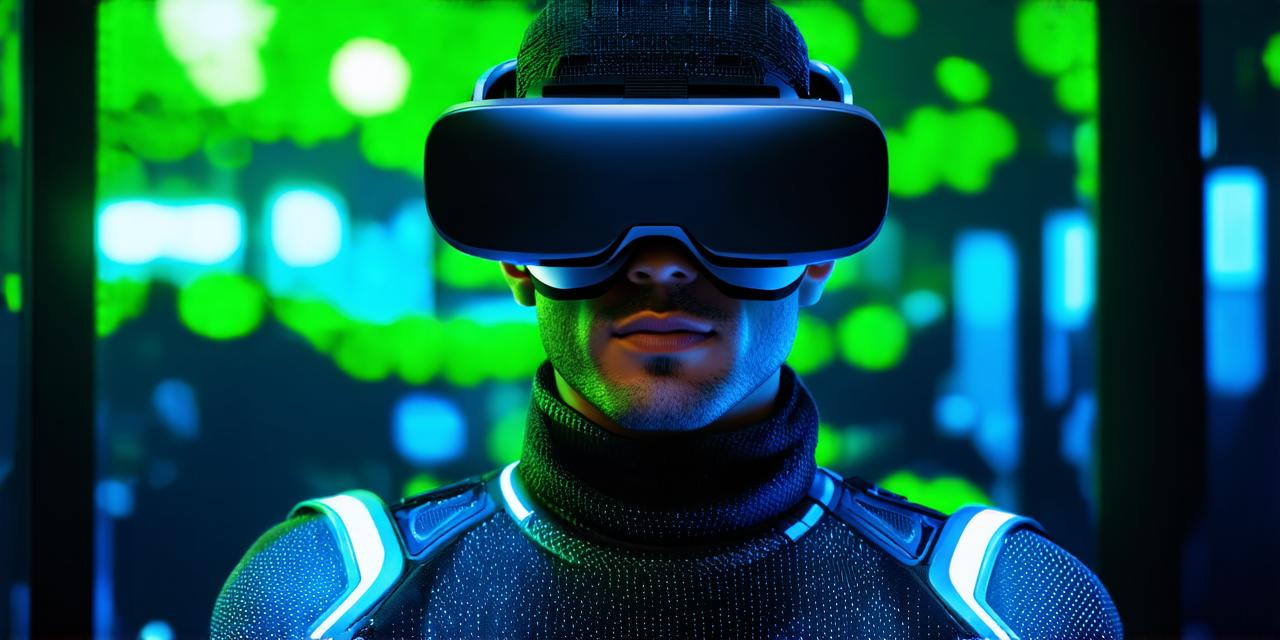Virtual reality (VR) is a rapidly growing industry with exciting possibilities for developers. From gaming to healthcare and education, VR has the potential to revolutionize the way we interact with digital experiences.
1. Head-Mounted Display (HMD) Devices
The most common way to enter virtual reality is through head-mounted display devices such as Oculus Rift, HTC Vive, and PlayStation VR. These devices use sensors and cameras to track the movement of your head and provide a 360-degree view of a virtual environment. With HMDs, you can experience full immersion in a digital world, making them ideal for gaming and other applications that require a high level of interactivity.
2. Smart Glasses
Smart glasses are another way to enter virtual reality. These devices use augmented reality (AR) technology to overlay digital information onto the real world. For example, Google Glass can be used in healthcare settings to provide surgeons with real-time data during procedures. While smart glasses are not as immersive as HMDs, they offer a more practical and cost-effective solution for certain applications.
3. Mobile Devices
Mobile devices such as smartphones and tablets can also be used to enter virtual reality through apps and other software. For example, the Samsung Gear VR uses a Galaxy S or Note phone to provide a 360-degree view of a virtual environment. While mobile devices are not as powerful as HMDs or smart glasses, they offer a convenient and affordable way to experience virtual reality on the go.
4. Web-Based Virtual Reality
Web-based virtual reality allows you to enter a virtual world through your web browser, without the need for any special equipment. This is achieved through the use of WebVR technology, which uses JavaScript and other web technologies to create immersive experiences in the browser. While web-based VR may not be as powerful as HMDs or mobile devices, it offers a convenient and accessible way to experience virtual reality from anywhere with an internet connection.
5. Projected Virtual Reality
Projected virtual reality is another way to enter virtual reality without the need for special equipment. This technology uses projectors to create a 360-degree view of a virtual environment in a physical space. While projected VR may not be as immersive as HMDs or mobile devices, it offers a practical and cost-effective solution for certain applications, such as training and simulation.
6. Wearable Devices
Wearable devices such as smartwatches and fitness trackers can also be used to enter virtual reality through apps and other software. For example, the Apple Watch can be used in conjunction with the Samsung Gear VR to provide additional controls and functionality. While wearable devices may not be as powerful as HMDs or mobile devices, they offer a convenient and affordable way to experience virtual reality on the go.
Best Practices for Developers
Regardless of the method you choose to enter virtual reality, there are several best practices that developers should follow to ensure a positive user experience. These include:
- Keeping it Simple: Virtual reality experiences should be simple and easy to use. Avoid cluttering your environment with too much information or controls.
- Providing Clear Instructions: Users should be provided with clear instructions on how to navigate the virtual world and interact with objects.
- Ensuring Comfort: VR devices can cause motion sickness, so it’s important to ensure that users are comfortable during their experience. This may involve adjusting settings or providing a break if necessary.
- Testing: Before releasing your VR experience, it’s important to test it thoroughly to ensure that it works as intended and provides a positive user experience.
- Collaboration: Collaborating with other developers and experts in the field can help you create more effective and engaging VR experiences.
Real-Life Examples
Virtual reality is being used in a variety of industries, from gaming to healthcare and education. Here are some real-life examples of how VR is being used:
- Gaming: Virtual reality games provide a highly immersive experience that allows users to feel like they are truly part of the game world.
